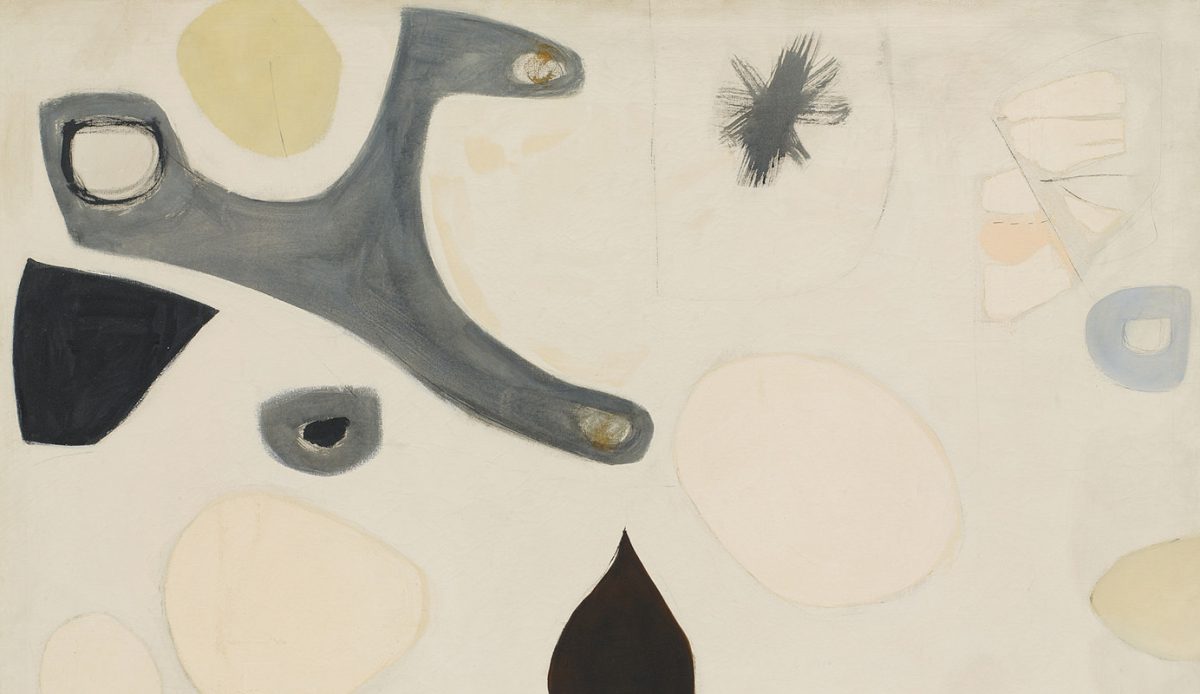The Broad Museum, Downtown Los Angeles
(June 11-October 2, 2016)

Cindy Sherman | Untitled #122, 1983. Chromogenic color print. 35 1/4 x 21 1/4 inches © Cindy Sherman. Courtesy of the artist and Metro Pictures.
Cindy Sherman has become one of today’s most famous living artists by engaging in a supreme and extended act of would-be narcissism. This alone would seem to make her a perfect artist for our time, except that her supreme and extended act is actually one of self-erasure. Sherman has adopted a formula and stuck to it for 40 years (the earliest work in her retrospective is from 1976), precisely in order to set up a pattern that serves as a through line even as it confounds expectations. Although actually, they are less confounded than queered: Sherman’s work is not about Cindy Sherman, it is about all sorts of people whom Sherman plays, and about her playing them. Sherman’s oeuvre is one long theatrical conceit – or, you might say, drag act.
This act of disappearance into others serves as a given in any one of Sherman’s series, whether in the Untitled Film Stills with which she broke into international prominence or in the latest work in which she transforms herself into matrons of a certain age, status and milieu. It eliminates the distracting question of who really is appearing in her photographs without obscuring the model’s identity. It’s the same model, picture in and picture out, and the same person who conceived of the image, fashioned it and arranged it. For all that, these are not self-portraits. At most, they’re other-portraits of the self.
This might suggest that Sherman is documenting myriad alter egos — the 3000 Faces of Eve. But rather than inner personae, these are outer roles. Their apparent identity trumps their actual identity – which is why the Untitled Film Stills, for instance, are (still) so compelling, so close in spirit to their postwar-European-cinema sources. It is also the reason the grotesquely conceived, garishly colored and lit color photos of the mid-1980s are still so repulsive, whether or not you have a stomach for horror flicks and the Grand Guignol, while yet so riveting.
The Untitled Film Stills work wonderfully in reproduction. Every one of them, a gelatin silver print, printed in a cozy (once-ubiquitous) 10 x 8-inch format, they read as pages in a book. The rest of Sherman’s oeuvre, however, suffers at that scale. When she began working in color and in large sizes, she was no longer approximating the conditions of information about movies, but the conditions of movies themselves. In 1980, Sherman went large and loud and has not looked back since – clearly because she wants to maintain and explore how a picture confronts a viewer, whether still or moving. These looming, eye-blistering apparitions need to be oversize and domineering, to the point where viewers aren’t sure at first what they’re looking at and have to re-glance or step back to grasp the subject matter.
The subject matter has remained cinematic, but no longer self-consciously, deconstructively, so. At a certain point, Sherman began allowing herself to make fun of her own process while still flogging it. It wasn’t when she really started allowing the seams to show, the make-up to cake and the prosthetic enhancements to begin their decay, so much as when she permitted herself to tell tales out of school rather than being the smart, observant student. Sherman shows through in the non-self-portraits of the ‘90s; once again, they’re about her playing dress-up. But around 2000 she begins disappearing into the portraiture, zooming in on images of contemporary women who could actually exist independent of her. Having admitted to the fakery, Sherman now fakes it better; no longer faking it but playing it.
With its careful pace and wise selections, the Broad retrospective makes evident all these undercurrents. It validates the brilliance of Sherman’s calculations and the equal brilliance of her follow-through, and it honors the intensity of her narrow, laser-like vision.









